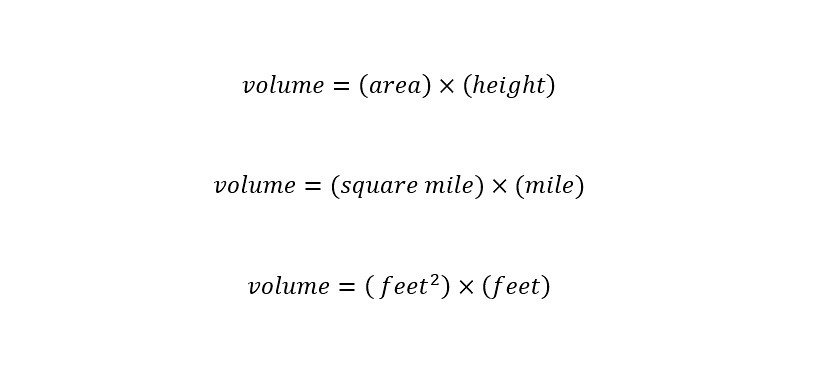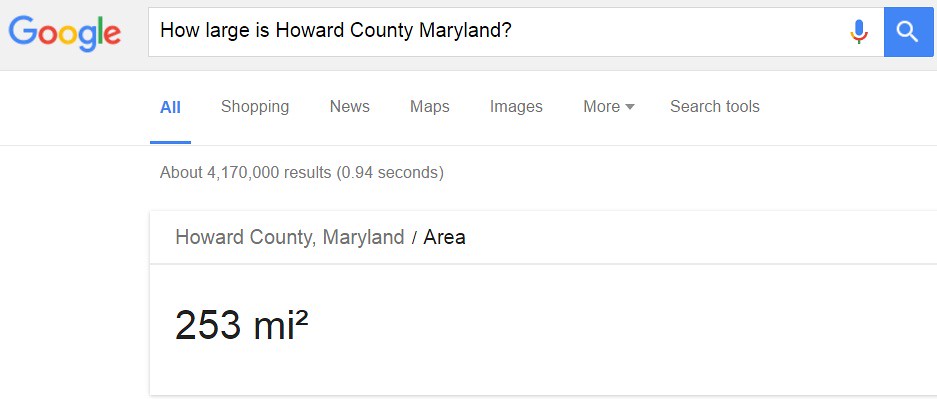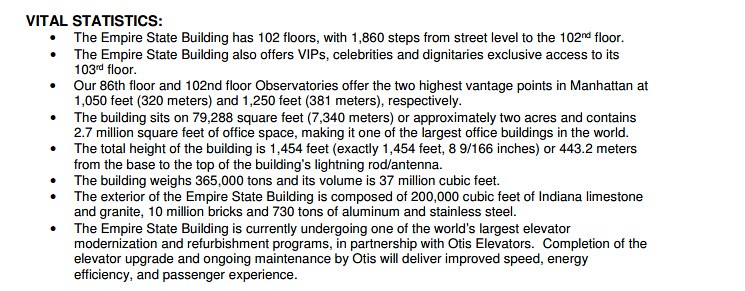How Is Rainfall Reported?
Over the course of the last year, I have started to write about the reporting of rainfall. I am constantly amazed at the subtlety with which large volumes of rain are reported after a given storm. This problem of mine started back near the end of 2015 -- after reading a report of a storm.
Before I get into the initial motivation to investigate news reports about volumes of rain fall, I would like to say that I am still baffled why the news reports "inches" of rainfall while total volumes in units of "cubic feet." I would prefer the units of total rainfall reported in units of "gallons" -- personally. The reason is that I can visualize using a few metrics (large volumes -- pools, stadiums, etc.) to compare the reported values to. Although, one could argue that my request is just unique to me and I could just as easily perform dimensional analysis to get the units that I feel comfortable with. Fair enough!
During the end of the month of December of 2015, large volumes were reported and I wrote an initial blog post about this rainfall in following month. Accuracy was not the first and foremost during this storm -- which concerned me. The reason why is in the numbers. Let's take a look briefly at the reported numbers which in some cases were skewed or miscalculated.
In that blog post, the news reported a number based on the weather service of 65 billion gallons of water from a single storm -- which is an enormous amount of rain. One of my family members told me this factoid and stated that 65 billion gallons of water equated to increasing the water level of Lake Tahoe by 6 inches. Meaning, that enormous amount of rain if collected and poured into Lake Tahoe would result in an increase of 6 inches of height to the lake.
After hearing that number, I sat back and thought -- Wow -- that means that Lake Tahoe is larger than I thought. This factoid bothered me for a few days. As a result, I decided to carry out a few calculations which are shown in the blog post. I will get to the point. The result of the calculation gave a volume that was very different than the volume reported by the news.
What was I to make of this disparity in volumes?
Did I make a mistake in my calculation?
Did my approximation not make sense?
Check out the blog to understand my full thought process in calculating using a simple approximation -- that of a cylinder. The result of the calculations revealed that the total volume of rainfall in that particular storm was 6.5 billion gallons NOT 65 billion gallons. A factor of 10 different in the reported statistic.
Should we be concerned by the lack of accuracy in reporting?
Yes.
Two major results came from that practice:
1) The volume I calculated was correct.
2) The weather station corrected their reported volume after checking their calculation.
3) I learned a better method by which to perform dimensional analysis of rainfall using reported volumes.
Out of this exercise came the correction of the weather station. Again, all of this is in the blog post. Additionally, I learned that method by which the weather stations use (one of the methods) to calculate the volume of rainfall in a given storm.
After carrying out the exercise and writing the blog, I decided that from that point on forward, I would watch news accounts of rainfall volume in the future. Further, I would look out for reported statistics and try to put them into perspective for the reader using dimensional analysis. The result has been the blog posts that make up this site.
The results of previous blog posts this year so far regarding the total volume of rainfall have been collected into a table shown below:
Note: Click on any of the cities to access original blog post (with calculations) on this site -- (1) Bladen County, (2) Goldsboro, (3) Lumberton, (4) Smithfield, (5) Raleigh, (6) Rocky Mount, (7) Haiti, (8) China, (9) Elliot City, (10) Huauchinango, (11) Louisiana -- and I forgot (12) Macedonia
The first seven storms listed in the notes above are a result of Hurricane Matthew which ripped through the Eastern part of the USA originating from Haiti. The last five storms listed are storms that have occurred due to unusual rainfall this year. Recently, the Associated Press covered this in a story about the National Oceanic and Atmospheric Administration released report on rainfall this year around the world with implications toward Climate Change.
Regardless, the enormity of the storms are worth writing about. With that in mind, let's move onto the reported value of rainfall over the season thus far in Folsom (California) of 55 billion gallons so far.
How Much Is 55 Billion Gallons Of Rainfall?
In a recent story in the 'Los Angeles Times' titled "A tale of two droughts in California: Wetter in the north, still bone dry in the south" the disparity of rainfall between Northern and Southern California was discussed with varying numbers reported which would make a person mind spin. One excerpt that stuck in my mind was the following regarding rainfall received in Folsom:
The recent rains were enough to force federal officials to begin releasing water from Folsom Lake to protect against flooding for the first time since March, said Louis Moore, a spokesman for the Bureau of Reclamation, which manages the reservoir. Since the beginning of December, Folsom has risen more than 20 feet — an increase of about 55 billion gallons.
Now, if you are a reader of this blog, then the number 55 billion gallons should stick out of the excerpt above along with the number 20 feet. Further, with the previous blog posts on this site, you will understand my need to understand the magnitude of large numbers like this. Numbers that are truly incomprehensible. I believe that the value of 55 billion gallons of rainfall qualify for the analysis typically found on the site.
To start such an analysis to put the enormous number into perspective, a metric is needed. A metric serves as a 'ruler' of measurement. Metric's specifically take away all ambiguity when defined. What? I know that is confusing. Basically, we need a measurement to compare the volume too.
Let's choose 3 volumes and see how the statistic of 55 billion gallons compare. The 2 volumes will be: 1) World's largest pool 2) Lake Tahoe.
1) World's largest swimming pool:
To start an analysis of the volumes is to ensure that the 'units' of measurement are the same. That is, for the example at hand, the volume of the World's Largest Swimming Pool needs to be expressed in units of 'gallons' to be directly compared to the volume reported above of 55 billion gallons.
The World's Largest Swimming Pool is shown below:
Source: Twisted Sifter
The volume of the enormous swimming pool is a whopping 66 million gallons. That is huge. If we express the volume of rainfall reported in the article in scientific notation, the number would look like the following shown below:
Remember, if the volume were written out in long form, the value would appear as follows: 55,000,000,000 gallons! Expressing the number in scientific notation allows us to express the number in a compact form. The volume of the World's Largest Pool can be expressed similarly in a compact scientific notation.
Since the units are of the volume are expressed in 'gallons' -- the number of swimming pools that could be filled with 55 billion gallons of rainfall can be directly determined by dividing the two volumes as shown below:
Wow! The result can be interpreted as the following:
55 billion gallons of rainfall would fill 830 - World's Largest Swimming Pools!!!!!!!!!
How does one visualize that number of swimming pools?
Note: Since my last blog post using swimming pool in San Alfonso del Mar -- another pool built by the same company has built the new "world's largest swimming pool" -- Crystal Lagoon located in Sharm-el-Sheikh, Egypt.
Can you visualize a total volume of 830 of the above pools?
I cannot. Maybe another metric is needed to better grasp the enormous volume of rainfall.
Sometimes our choice of a metric does not necessarily cast the volume in a graspable light. For instance, trying to visualize the total volume of 830 World's Largest Pool combined is too difficult. Maybe another analysis is useful with a larger metric to cast the volume is needed.
In order to get a better grasp of the volume, a larger volume is needed to serve as a 'metric' to compare enormous volumes too. 55 billion gallons is not a typical volume. Therefore, a larger volume is needed. On a previous blog post on this site, Lake Tahoe has been used as a metric for extremely large volumes -- which this qualifies as that category.
Below is a picture of Lake Tahoe from Space:
Source: Snow Brains
Upon inspection of the photo above, Lake Tahoe is a huge lake. The total square area of the Lake is 191 square miles. In order to use this value as a reference to cast 55 billion gallons of rainfall into perspective, a little math will have to be performed. But, we will take the process slow. If at any point, you (the reader) need clarification, please leave a comment in the blog post below.
To start with, an equation for the volume of Lake Tahoe is needed. Above, the surface area of Lake Tahoe is given as 191 square miles. An expression (or equation) for the volume of an irregular shape like a lake is the following:
According to the expression above, the volume can rainfall can be determined by knowing the amount of rainfall that a storm delivered across a surface. Meaning, if a circle is the two-dimensional surface, then by understanding how much water fell on the circular surface, the determination of the volume of a cylinder is possible. By the way, the units of volume are 'cubic feet' or 'cubic mile' - etc. Cubic feet is most likely easier to visualize -- since most of us have an idea of the dimension of a foot is in comparison to inches of rain.
Since in the present case, a volume is known, then in order to understand the magnitude of 55 billion gallons the question becomes the following:
How many feet would Lake Tahoe rise if 55 billion gallons were dumped into the Lake?
In order to start the calculation, a unit conversion is required to move on. The second line of the volume expression states volume in terms of 'units of miles'. This is not useful when discussing rainfall -- which is usually reported in units of 'inches'. If the calculation is carried out with units of 'miles,' then the results of the calculation would be expressed in 'miles' -- which would be difficult to interpret.
Rather than get an answer that is difficult to interpret, a conversion can be performed to units of feet from miles. There are 27,880,000,000-square feet in a square mile. With this conversion factor available, the units conversion is easy and shown below from square miles to square feet:
Next, take the answer (in square feet) and plug the value into the original volume above:
Shown above is an expression for volume with a value for the area (191 square miles) inserted. There are still two unknowns left -- volume of rainfall and height. In order to plug a volume into the above expression, a 'unit' conversion is necessary from 'gallons' to 'cubic feet'. There is 0.133681 cubic feet in 1 gallon. With the conversion factor in hand, the conversion is simple as shown below:
If we rearrange the above expression to solve for height from the total volume, we get the following:
Wow. The following result states that if 55 billion gallons of water was dumped into Lake Tahoe, the water level would rise 1.4 feet in total. That is just under 18 inches (1.5 feet).
Can you visualize the change in height?
Of course - why? Because, I am 5 feet 7 inches tall. I could stand next to the Lake (shown below) and visualize roughly the water level rising to my knees. I can easily imagine Lake Tahoe filling up by 1.5 feet. What I did not realize is that Lake Tahoe is enormous.
Further, take that measurement and look out onto the Lake and the visualization of 55 billion gallons comes into focus. The choice of Lake Tahoe as a metric fits the dimensional analysis much better. Half the battle in performing dimensional analysis problems is choosing the correct 'units' and 'metric' by which to compare the stated (reported) value in the popular news to.
Again, here is another picture of Lake Tahoe shown below (not from space):
Source: Lara Farhadi
Conclusion . . .
In the paragraphs above, a couple of metrics (world's largest pool and Lake Tahoe) to cast the enormous volume of 55 billion gallons of rainfall into perspective. Both volumes represent two extremes of the entire spectrum. Using the process of dimensional analysis, we were able to compare the volumes to the reported volume of 55 billion gallons. Prior to this analysis, any attempt toward understanding the true magnitude of the statistic.
Too often, reading the news results in a lack of understanding of the true magnitude of large numbers. Whether these numbers represent volumes, heights, miles traveled, electricity generated, there is a need to try to understanding them. The avenue by which to do so is through 'dimensional analysis'. The process is rewarding when you arrive at a result. Regardless of the result. Often times, more thought and analysis is needed to make further sense of the statistics.
Until next time, Have a great day!














































